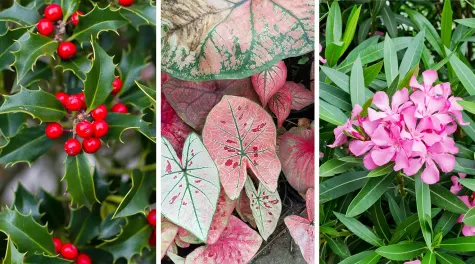lagunabeachcanow.com – Living in a home surrounded by plants can enhance the aesthetic appeal and bring a touch of nature indoors. However, it’s crucial to be aware of the potential dangers posed by some of these plants, especially if you have children or pets. This guide will help you identify and manage poisonous plants commonly found in homes to ensure the safety of all inhabitants.
Understanding the Risks
Some plants can be toxic if ingested, while others may cause skin irritation or allergic reactions. The severity of the reaction can vary widely, from mild discomfort to severe health issues, including death. It’s essential to know which plants are safe and which ones to avoid.
Poisonous Plants to Watch Out For
- Jimson Weed – Known for its green leaves that can be tinged with purple, this plant is highly toxic when ingested or inhaled, causing nausea, vomiting, and hallucinations.
- Lantana – These colorful plants are toxic and can cause poisoning in children and pets.
- Bitter Nightshade – Found in creeks, gardens, and parks, this plant can cause poisoning in livestock and pets.
- Mountain Laurel – Known for its beautiful blossoms, this plant is deadly and can cause burning sensations in the mouth and throat.
- Chinese Lanterns – While the color pods are used in floral arrangements, the leaves and immature fruit are toxic.
- Stinging Nettle – Touching this plant can cause a burning and itchy rash due to its needle-like hairs that inject formic acid into the skin.
- Giant Hogweed – The sap from this plant can make the skin sensitive to sunlight, leading to sunburn and blisters.
- Yellow Dock – This plant can cause difficulty breathing and heart issues if consumed raw.
- Rosary Pea – The seeds of this plant are dangerous if cracked, broken, or chewed.
- Tobacco – Contains nicotine and anabasine, which are fatal when ingested.
- Lily of the Valley – Known for its sweet appearance, this plant can cause dizziness, vomiting, rashes, and diarrhea if ingested.
- Castor Oil Plant – The seeds contain ricin, a highly poisonous substance that can cause severe dehydration.
- Rhubarb – While the stems are edible, the leaves are toxic and can shut down the kidneys if consumed in large quantities.
- Foxglove – Known for its bell-shaped blooms, this plant contains compounds used in heart medicine, making it dangerous if ingested.
- Wisteria – The seed pods of this plant are toxic to pets.
Safety Tips
- Identify Your Plants: Always know the names of the plants in your home. If someone ingests a plant, Poison Control needs to know what it is to provide appropriate advice.
- Keep Plants Out of Reach: Keep indoor plants where children and pets can’t reach them.
- Supervise Outdoor Play: Watch young children carefully when they play outdoors to prevent them from ingesting plants.
- Educate Children: Teach children to always ask an adult before eating or drinking anything.
- Be Cautious with Wild Plants: When camping or picnicking, only eat wild plants if you are absolutely certain of their identity. Mistaken identity can be fatal.
Conclusion
By being informed about the potential dangers of poisonous plants and taking appropriate precautions, you can ensure a safe and healthy living environment for everyone in your home. Always err on the side of caution and consult with professionals if you suspect poisoning.
